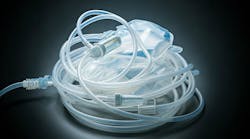The drug industry today is suffering from a lack of innovation. If it continues along this path, only stagnation can result.
Many traditional pharmaceutical companies are investing in biopharmaceutical capacity to become more innovative.
Today, they can also work within the Process Analytical Technology (PAT) framework for innovation. PAT has opened the door for dialogue with the regulators. It also allows drug manufacturers to break down functional silos by focusing on the most important aspects of the product and its processes – from research and development to finished product.
PAT relies heavily on philosophies of continuous quality improvement advanced by such gurus as Deming and Juran.
At the same time, Quality by Design (QbD), advanced by ICH, is becoming common practice, at least for small molecules.
We have not yet seen it applied universally in biopharmaceutical manufacturing, and we have yet to see a drug product that reflects the application of QbD principles, as outlined by Juran, throughout its entire life cycle.
Thus, the innovative approaches to pharmaceutical R&D, manufacturing and quality control, all addressed by the PAT guidance, remain to be seen in action.
However, we can start to leverage the knowledge of PAT and QbD gained in small molecule manufacturing, to biopharma, and to use new technology to modernize R&D, manufacturing and quality control.
One place to start would be in simpler, more mature biopharmaceutical areas such as influenza vaccine manufacturing, where we already have extensive data.
Today, influenza vaccine manufacturing is considered low profit or even a loss leader, and only recently has the market seen the entry of new manufacturers.
Industry’s reluctance to part with egg incubation processes is a key reason for prolonged manufacturing cycles and high manufacturing costs. Cell-based bioreactor manufacturing is being implemented, but its adoption remains very slow.
The manufacturing process is relatively simple. Identified strains of viruses are grown in number, purified and inoculated so that the virus shell is neither damaged nor destroyed. The inoculated shell is then mixed in a buffer medium suitable for human use, dosed into vials or other containers for commercial distribution.
Live virus production is variable, so following a routine, never changing process will still result in variable yield and quality.
The incubation process will directly impact the inoculation stage, and the volumes of inactivation agent being used. Since the agent isn’t suitable for human consumption, a number of buffer exchanges are needed.
Separation of inoculated viruses is done in a number of ways, all of which aim to separate the proteins and “process effluents” from the inactivated viruses. Membrane technology has advanced in this area, yet some manufacturers are still more at ease with older, less efficient techniques.
What if we dared to thing differently? Then, perhaps, we could manufacture the flu vaccine in 3 to 4 months. Begin with a bioreactor instead of egg incubation. Control the status of the bioreactor and monitor cell density in real time.
Now, what if the inactivation were not done with chemicals, and what if the process were designed to minimize buffer changes?
Vaccine manufacturing might also benefit from the use of disposable, “single use” modular manufacturing process technology, to reduce the risk of contamination and to improve yield. Such systems could bring pharma one step closer to continuous biopharmaceutical manufacturing.
Although biopharmaceutical manufacturers have been investing in single-use technology, many remain cautious. For some, there is a fear of how regulators will react to use of the technology. Others are concerned about not being able to write off existing stainless steel assets.
Are the regulators getting in the way?
As the Roman philosopher, Seneca the Younger, wrote, “It is not because things are difficult that we do not dare; it is because we do not dare that things are difficult.”
If we dared, we would find out that regulators are open to change. FDA initiatives opened the door in 2003, and that door is still open for us today, but only if we dare cross the threshold.





